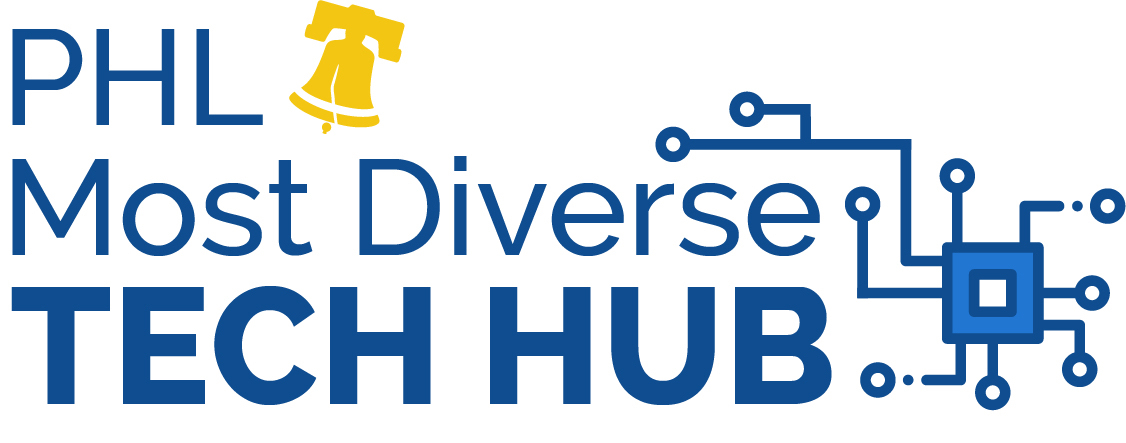For people who pivot to tech jobs from other industries, entering a completely new field without traditional training can be daunting. But the world of bootcamps and training programs can simplify the process of gaining experience and changing careers.
Kile Johnson knows this well.
After switching his focus from graphic design to biomedical science at Rowan College of South Jersey, he worked for a time as an environmental health and safety specialist at an electrical product manufacturing company. While he was good at his job, he told Technical.ly, he felt unfulfilled in the position. He realized his favorite part of the job was creating signs and training modules for his company.
“I thoroughly enjoyed that process the most, despite it not being one of my bigger responsibilities,” Johnson said. “One day, I said to myself, ‘I should get back into design if I like designing simple signs and training modules so much.'”
He became interested in UX design as a hobby, but when a friend suggested it could become a career, Johnson decided to look into the field and what that might look like. It seemed like a fit. Johnson knew he didn’t want to go back to school, so he looked up shorter-term bootcamps that could teach him the design skills he’d need to land a job.
“I’m a really strategic and analytical person,” he said. “So I didn’t want to just jump into something and expect doors to just open for me immediately because that’s just not realistic, right? So I did a lot of research into it.”
He ended up taking a Google Career Certificate Program in November 2021 and focused on building his design skills full time. Johnson finished the bootcamp after a month and started applying to jobs. It took him another couple of weeks to land an internship, where he worked for seven months. Three months after that, Johnson found his current position as a UX designer at King of Prussia-based clinical trial payment solutions company Greenphire — about one year total for a full career pivot.
“The constant stream of rejections can weigh on someone’s mental [health], but that’s just how it is when something’s competitive.”Kile Johnson
The job search process was a difficult one for Johnson. While there are plenty of job openings in UX design, he said, the field is extremely competitive. He applied to about 30 jobs per day for weeks to land that first full-time gig, but out of all those applications, he only ever got three interviews. But he tried to remember that hiring is a numbers game and just because he didn’t get chosen for a specific role, it didn’t mean he wasn’t talented.
“What are the chances that they just happen to run into my application? Because they could have found someone else that they really liked sooner than me, and I would have never gotten the shot,” he said. “So that’s why I say it’s not a true reflection of someone’s abilities.” To build his resume and improve his skills in the meantime, he kept up with design challenges and tried to soak up everything he could at his internship.
Johnson said the Google Certificate Program did prepare him for the job search, though. He found the program to be transparent about how competitive the field is and that people who have less experience need to prove themselves more to land a position. Without that warning, he said, he probably would have felt more discouraged.
“I think though that impostor syndrome can kick in where people may get an opportunity and they were like, ‘Oh, I don’t deserve to be here’ or people will lose confidence in themselves and say, ‘Oh, if I was really good, I would have an offer by now or I would have an interview by now,'” he said. “The constant stream of rejections can weigh on someone’s mental [health], but that’s just how it is when something’s competitive.”
Johnson said the program reminded participants that they just have to keep trying and believe in themselves, a message he stuck to through his job hunt. Encouragement from his mentor and senior designers in his network motivated him to keep going, too.
Now, Johnson is the design lead for all teams related to two products at Greenphire. He also tries to help out beginner designers that are experiencing the same thing he did. His advice to others who are job hunting: Don’t let the rejections get to you too much, and keep working to improve your skills.
Sarah Huffman is a 2022-2024 corps member for Report for America, an initiative of The Groundtruth Project that pairs young journalists with local newsrooms. This position is supported by the Lenfest Institute for Journalism.
This article appears as part of the Most Diverse Tech Hub initiative and is underwritten by the City of Philadelphia Department of Commerce. It was independently reported and not reviewed by this partner before publication.
Join our growing Slack community
Join 5,000 tech professionals and entrepreneurs in our community Slack today!
Donate to the Journalism Fund
Your support powers our independent journalism. Unlike most business-media outlets, we don’t have a paywall. Instead, we count on your personal and organizational contributions.






